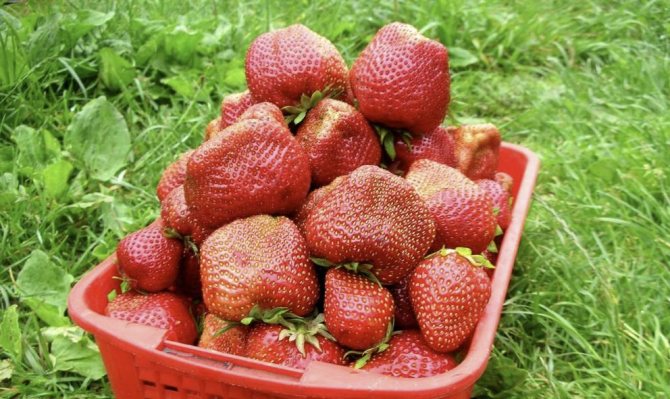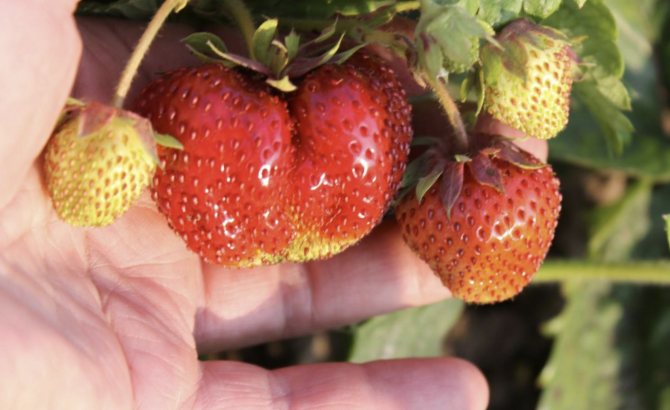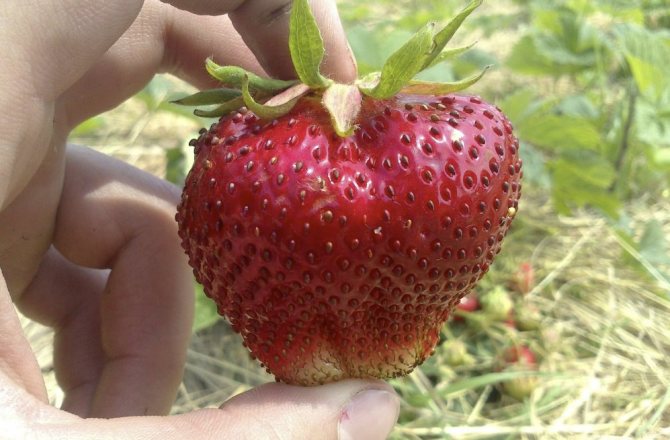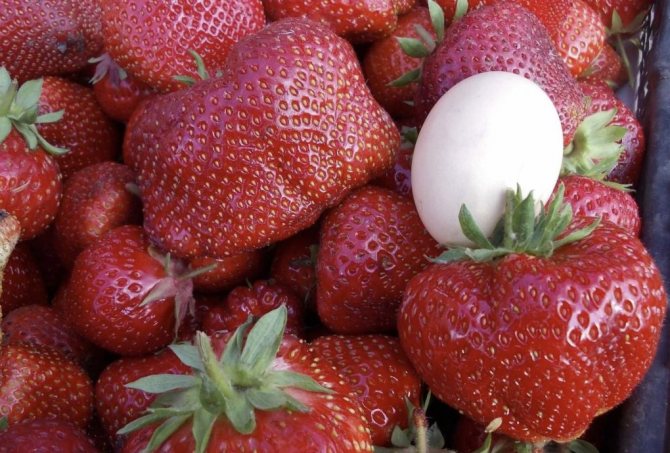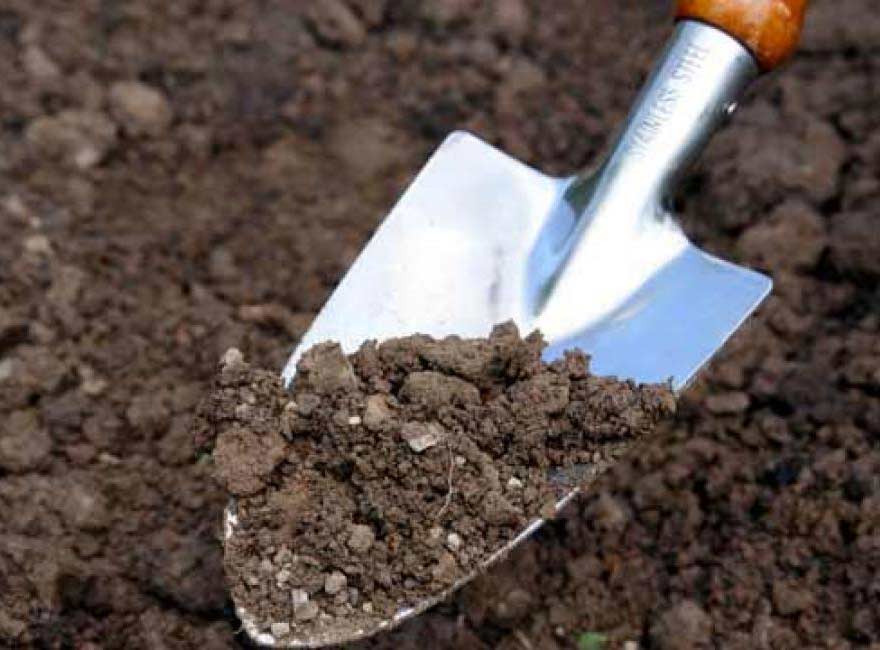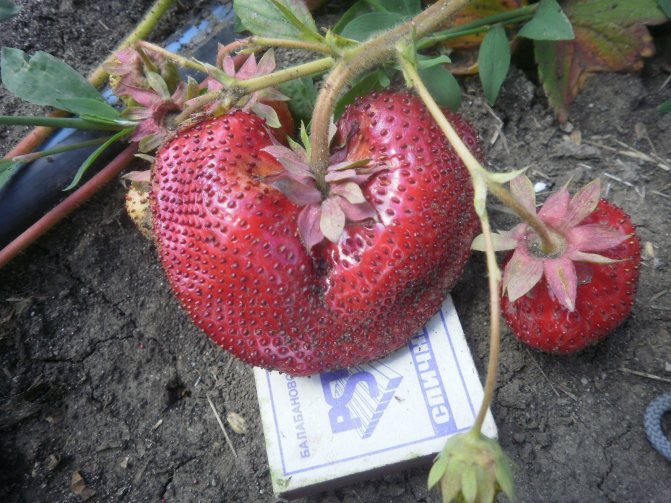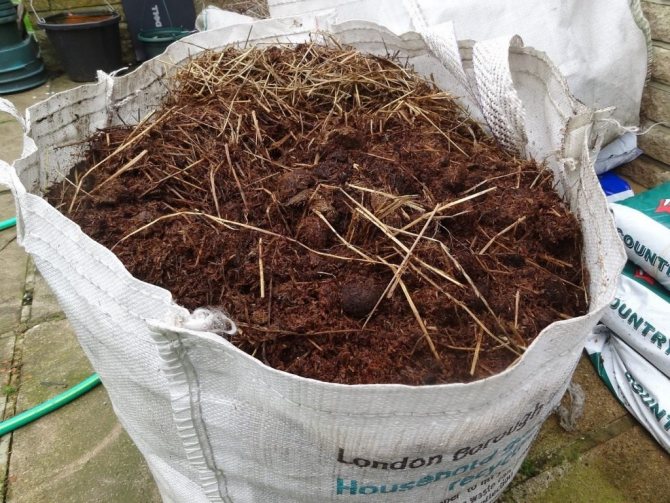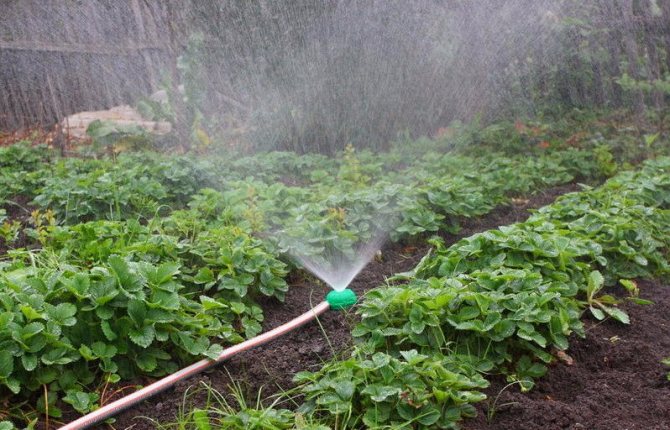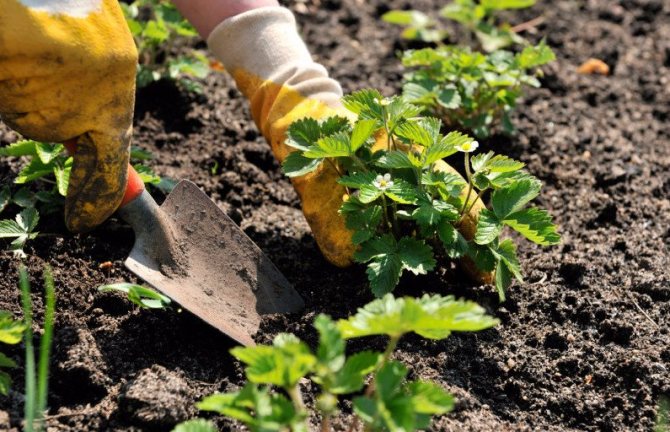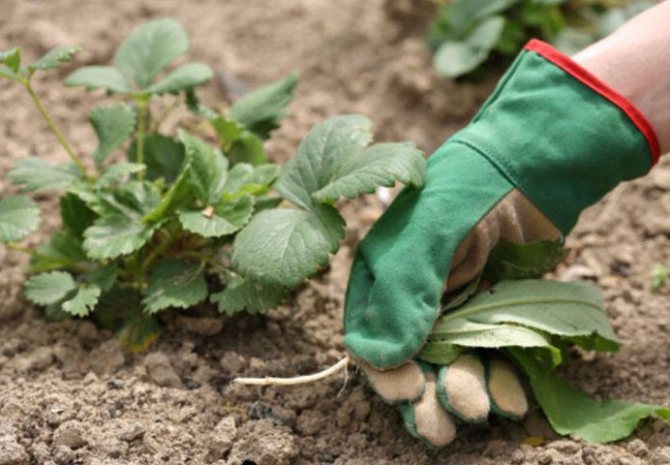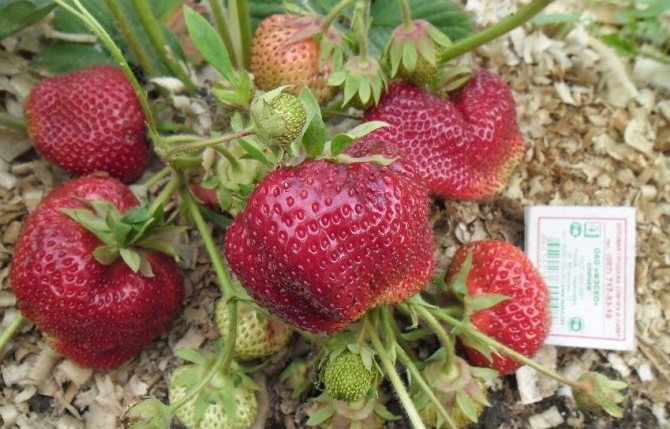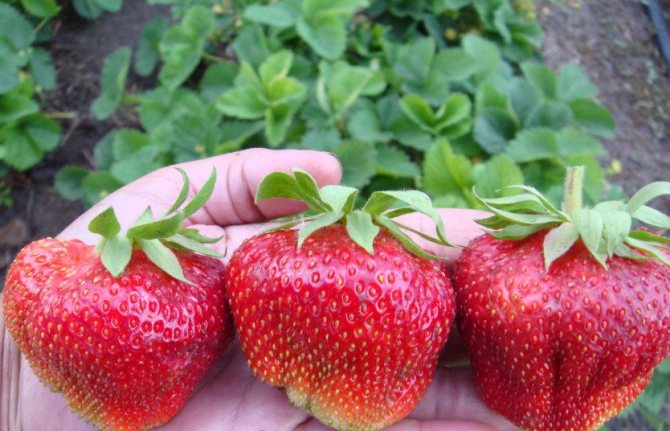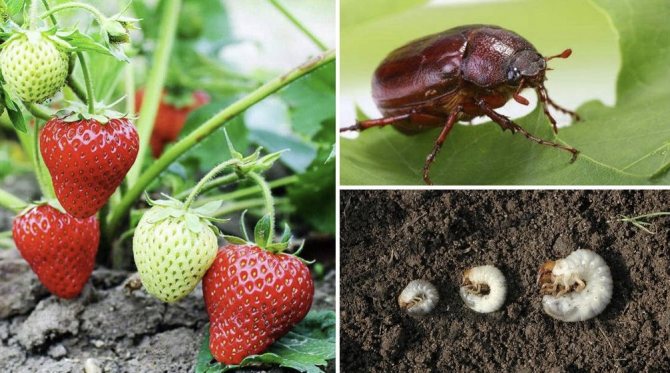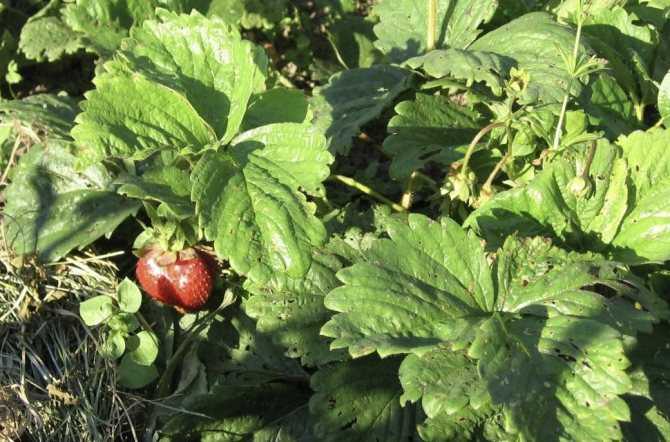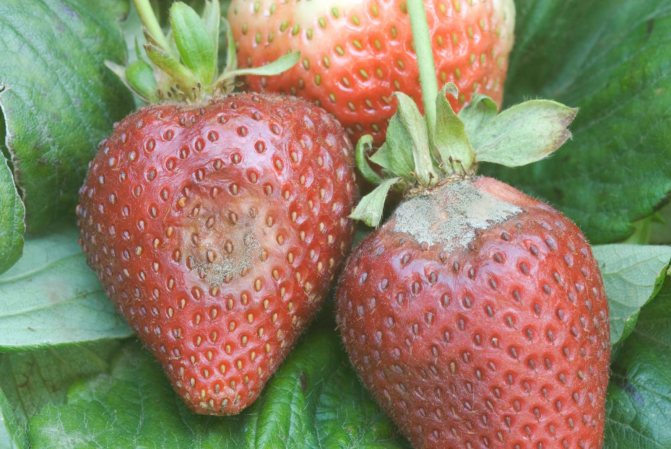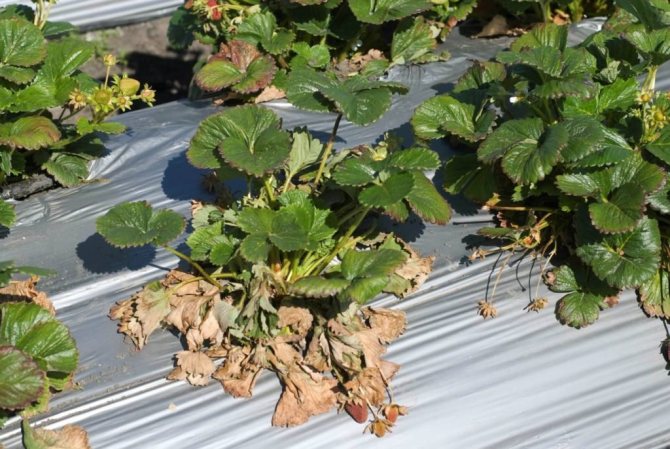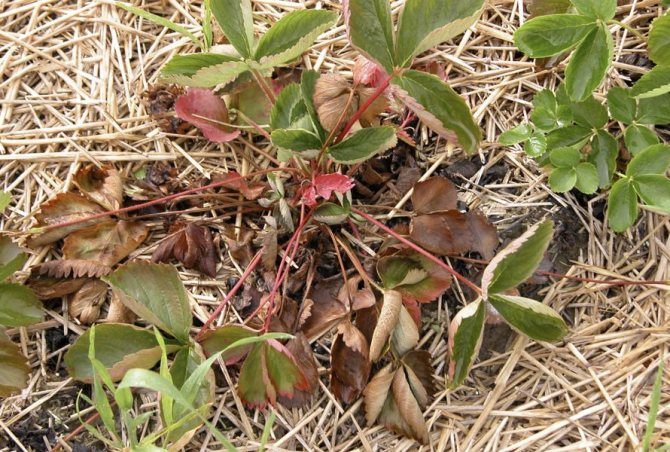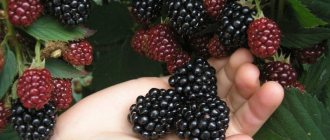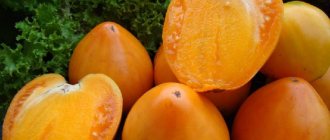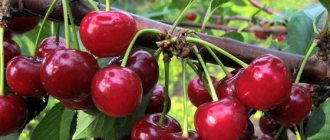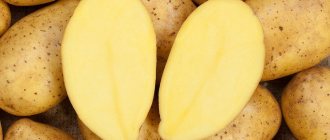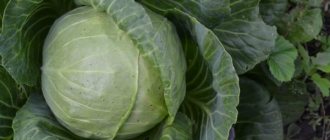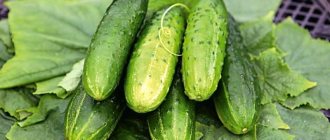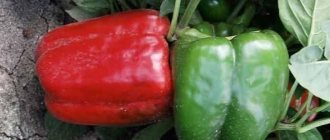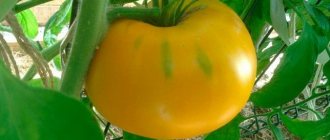If you are a strawberry lover, then, for sure, you want to know about a variety like Chamora Turusi. It was bred relatively recently, but has already won the hearts of thousands of gardeners. It is distinguished by large fruits, reminiscent of the Gigantela Maxi berry, which is famous for its large size. Chamora Turusi is no less in size, while very tasty and juicy strawberries. This variety is distinguished by a rich harvest and improved performance in many requirements. If you decide to plant this crop, then read the simple planting and care rules.
Strawberries or strawberries - which is correct?
Those gardeners are deeply mistaken who call the shrub, which gives us fragrant and sweet berries, strawberries. In fact, this is a garden strawberry, bred as a result of crossing the Virginian and Chilean plant species. This event took place at the beginning of the 18th century in France.
The culture came to Russia at the end of the same century, and the most common variety was named Victoria in honor of the Queen of Great Britain. Therefore, in our country, garden strawberries are often called Victoria strawberries.
Real strawberries are not usually grown in gardens but are found naturally. It got its name because of the shape of the berries, which resemble small balls. The plant is very different from its garden cousin. So what are the differences?
Table: the difference between garden strawberries and strawberries
| Indicator | Strawberry | Garden strawberries |
| Appearance |
|
|
| Fruit appearance |
|
|
| Berry flavor | berries are very aromatic and sweet | sweet and sour berries |
| Pollination method | dioecious plant | monoecious plant (self-fertile) |
Breeding history and characteristics of the variety
The history of the origin of the Chamora Turusi strawberry variety is controversial to this day. But in fact, no one has yet been able to find out exactly where this unique variety of garden berries came from.
It is believed that the berry culture came to our latitudes from distant and mysterious Japan, and is considered a Japanese selection. Other connoisseurs insist that Chamora Turusi's strawberries were bred by selection from well-known varieties of fruit crops.
But, whoever created a new variety of garden strawberries, he was definitely not mistaken in his experiments and calculations. The variety is definitely to the taste of everyone who has tried it at least once.
Description of the strawberry variety Chamora Turusi
Chamora Turusi is one of the mysterious varieties of garden strawberries. If you set out to trace its origin, then you will be faced with all sorts of uncertainties. Someone thinks that he is a "purebred Japanese", others are of the opinion about the hybridity of the variety and the use of the Dutch variety Maxi in breeding. There is even an opinion that this Chamora Turusi is an amateur form, an accidental branch of an unknown variety, which has achieved popularity due to its high consumer qualities.
Turush, Turus, Kurusi - other names of the variety.
Chamora Turusi strawberries are loved by gardeners for their high yields and large berries.Up to 3 kg of fruit can be harvested from one bush. Fruiting is extended, the highest yields are obtained from the second year after planting.
Strawberry bushes are powerful from the first year of planting. The next year they grow very much, so this should be taken into account when planting a plantation. The leaves are rather large with high peduncles, light green in color.
The berries reach truly gigantic sizes, it is not without reason that they are compared to apples (with proper agricultural technology, the weight is 110–130 g). The fruits have a rounded-conical, folded shape with combs. The color is dark red, the taste of the berry is sweet with a pleasant aroma of wild strawberries.

Chamora Turusi is a popular garden strawberry hybrid that stands out for its berry size
Table: advantages and disadvantages of the Chamora Turusi strawberry variety
| Benefits | disadvantages |
| large berries with amazing taste and aroma | high demands on soil fertility, prefers light rich soil |
| high yield | |
| very good survival rate of seedlings | medium resistance to brown spot |
| long-term, up to 20 years, fruiting in one place | |
| good powdery mildew resistance | poor drought tolerance |
| good transportability |
Testimonials
- Marina, 56 years old: “The Chamora Turusi variety I fell in love with for the fact that you can get a high yield. It is often possible to collect up to 2.5 kg of ripe and tasty berries from one bush. Another advantage of the variety is its attractive appearance, which does not deteriorate even during transportation. For me, this quality is very important, since I sell the harvested crop. And on sale, I send berries collected in the first run. They are just larger and look more presentable. "
- Evgeniya, 24 years old: “This variety of strawberries grows in my country house. Its distinctive feature is its high yield. One berry can weigh up to 50 g. Using them for fresh consumption and winter freezing. Even after processing, strawberries retain their flavor and sweetness. She is not picky about leaving, but she needs regular watering, otherwise she will not be able to harvest a high yield ”.
Here you can read information about the description of the Vima Tarda strawberry variety, see photos and find out more about reviews.
The Chamora Turusi variety is famous for its large fruits and high yield. It can be grown on almost any soil, but it is only imperative to create full-fledged conditions for growing and active fruiting.
Planting and caring for strawberries
Carrying out agrotechnical measures for growing Chamora Turusi strawberries, one should take into account such important features as:
- choice of landing site;
- soil preparation;
- scheme and time of landing;
- watering;
- plant feeding.
Correct performance of work on each item from the list is the key to obtaining high-quality bushes of garden strawberries and high yields.
Choosing a landing site
To obtain high yields, it is important, if not of paramount importance, to choose the right planting site and to prepare the soil in advance. Features for Chamora Turusi strawberries:
- The site for the placement of future beds is selected flat with a low level of groundwater.
- Placing a planting site on a slope, you need to choose the southwest direction - here the growing season begins earlier.
- When planning, the rows should be directed from north to south for better planting illumination.
- If the site is on a slope, the rows are directed across the slope to avoid erosion.
- The soil must be chosen light, and prepared in advance, preferably a month and a half before planting.
- A slightly acidic soil should be preferred. Liming is carried out if necessary.
- When choosing a landing site, one must take into account its protection from cold winds.
Additionally, when choosing a site for planting, one should take into account which crops were grown on it earlier.You should not use the land where potatoes, tomatoes and other nightshades grew, avoid places where cucumbers and cabbage grew. Good precursors for garden strawberries are beans, peas, beans, onions, garlic, carrots, celery, radishes, radishes, clover, green manure plants, herbs.
Soil preparation
Proper soil preparation before planting garden strawberry seedlings determines the yield of plants in this area. The stage starts with:
- digging the site to a depth of 25–35 cm;
- harvesting the remains of old plants;
- weed removal.
At the same time, organic and mineral fertilizers are applied: 8-10 kg of compost or humus, 30 g of superphosphate, 40-50 g of complex mineral fertilizer. With increased acidity, the soil is limed with the addition of organic matter.
Soil, moist and saturated with organic fertilizers, becomes a bait for snails, slugs, centipedes and other pests, so sprinkle the beds with coarse sand. It dries quickly and creates unfavorable conditions for them.
Video: soil preparation for planting strawberries
Scheme and landing time
Chamora Turusi strawberry bushes are very powerful and grow strongly the next year after planting. Therefore, the distance between them should be made large - from 40 to 60 cm, no more than four plants per 1 m2 should be placed.
You can plant garden strawberries during the entire growing season. But the main dates are summer-autumn (from July 25 to September 5) and spring (from April 15 to May 5).
Watering
Chamora Turusi is a very moisture-loving variety, however, due to waterlogging, the plants get sick, the taste of the fruits sharply deteriorates, and with a lack of watering, the berries become smaller and do not ripen.
Within 2 weeks after planting, the plants are watered 3 times a day, each time spending 0.5 liters of water per bush. The usual interval between treatments is 3-4 days. During the formation of ovaries, it is reduced to 1–2 days. A thick layer of mulch will help retain moisture in the soil.
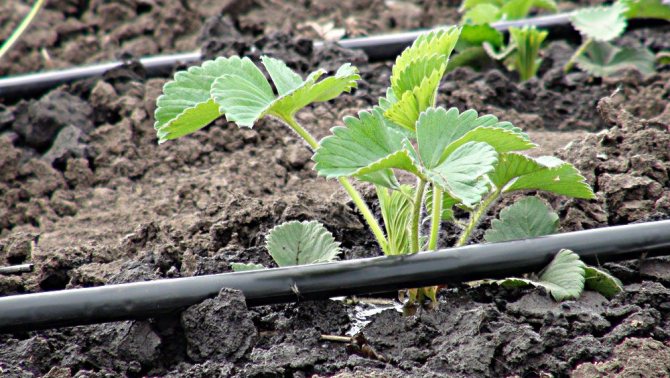

The best watering method is drip
The best irrigation method is drip or sprinkler irrigation (only before flowering). When watering from a watering can, pour the water into the aisles, being careful not to drip onto the leaves. When the water is absorbed, the bed is loosened, if necessary, the mulch layer is renewed.
The last time Chamora Turusi is watered in the middle of autumn, spending up to 5 liters of water for each plant. This procedure will help her prepare for the winter. If autumn is rainy, additional moisture is not required.
Plant feeding
To support sustainable fruiting, plants need annual feeding. From organic, humus, manure, wood ash are used. From mineral fertilizers, you should choose a complete complex fertilizer. Care should be taken to use preparations containing nitrogen, as an overdose will lead to abundant foliage growth to the detriment of the crop and may contribute to the appearance of fungal diseases.
Table: feeding strawberries
| Period | Fertilizers |
| Before planting or until new leaves form on an existing bed | Organic and mineral fertilizers (mix options):
|
| When the first leaves appear |
|
| When setting fruit |
|
| During preparation for wintering |
|
In addition to the aforementioned agrotechnical measures, during the growing season, they perform "minor" work: weeding, removing old leaves, trimming whiskers, etc.
Growing features
Caring for Chamora Turusi strawberries includes watering, pruning dried and diseased leaves, and loosening the soil. Particular attention is paid to watering and fertilizing. Feeding strawberries is carried out several times per season.
Breeding varieties
Chamora Turusi reproduces with a mustache or by dividing a bush. Plant seedlings quickly take root and grow.
The mustache is not taken from the bushes that brought the harvest, since Turusi directed most of Chamora's forces to ripening the berries. In this case, the plant is not capable of producing high-quality seedlings.
For propagation of strawberries, uterine bushes are chosen, on which all the buds are removed. The strongest whiskers are left on the plants.
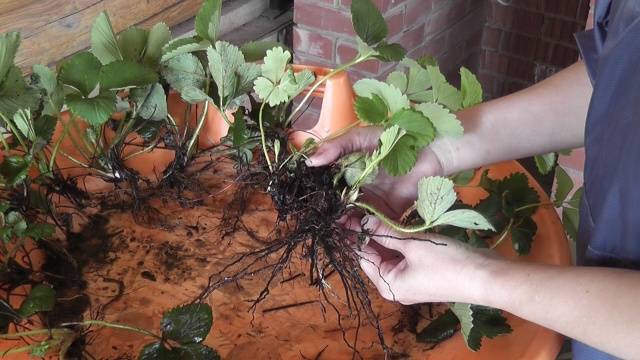

The strong root system of Chamora Turusi strawberry allows propagation by dividing the bush. For this, plants are selected that give a rich harvest. The procedure is carried out in the spring so that young plantings have time to adapt to new conditions.
The seedlings are preliminarily placed in small pots with soil and peat and placed in a greenhouse for several weeks. In the first year, the buds of Chamora Turusi are removed to help them take root.
Landing rules
The Chamora Turusi variety is planted in black earth, sandy or loamy soils. Before planting, the soil is fertilized with nutrients.
If the soil is sandy, then under the influence of the sun, the roots of the strawberry dry out. As a result, the size and number of fruits are reduced. Such soil should be fertilized with peat or compost in an amount of up to 12 kg for each square meter of Chamora Turusi plantings.


In heavy clay soils, the root system of strawberries develops slowly. Coarse river sand will help improve the quality of the soil. High beds with a drainage layer of branches are often set up.
Leave up to 50 cm between the bushes to avoid thickening of the plantings. With good ventilation, Chamora Turusi gets sick less and does not attract insects. With this method of planting, it is easy to remove the mustache, weed and loosen.
The seedling is placed in the ground to a depth of 15 cm, the roots are straightened and sprinkled with earth. For planting Chamora Turusi, they choose the end of August, so that the plant takes root and gains strength. If the region is distinguished by cold and little snowy winters, then strawberries are planted in May.
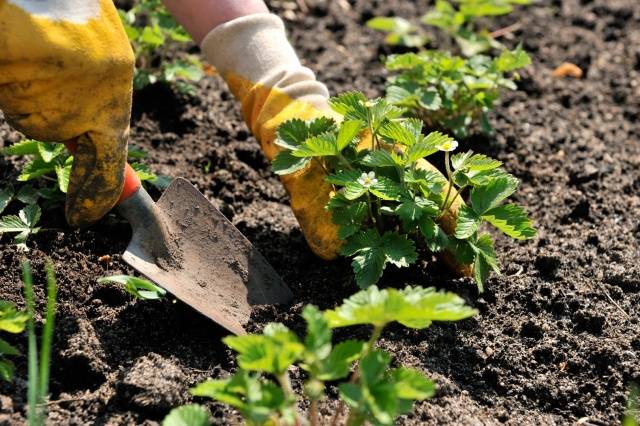

Watering features
The Chamora Turusi variety requires moderate watering. With a lack of moisture, the plant withers, the leaves become tough, and the berries become small. Excessive watering will also not benefit the strawberries - the bush will rot, the fruits will become watery in taste, gray rot and brown spot will spread.
Before the first watering of the plants, the mulch layer and old foliage are removed. The procedure is carried out in the morning to avoid burning the leaves. Watering Chamora Turusi requires water with a temperature of 15 degrees. The water can be preheated.
On average, it is enough to water the plantings once a week. In hot weather, the procedure is performed more often. Fertilization (mullein, minerals, etc.) is often combined with watering.


Chamora Turusi does not tolerate drought well. Therefore, when the temperature rises in summer, strawberries need to be watered. Moisture access is especially important during fruiting. Then it is allowed to water daily.
Drip irrigation includes a network of pipelines that provide moisture to the plant roots. As a result, moisture is evenly distributed and its consumption is reduced.
Pruning and loosening
Strawberry Chamora Turusi is prone to rapid overgrowing, therefore, requires constant care. In the spring and after the end of fruiting, you need to remove the mustache, old and diseased leaves. A secateurs are used for work.
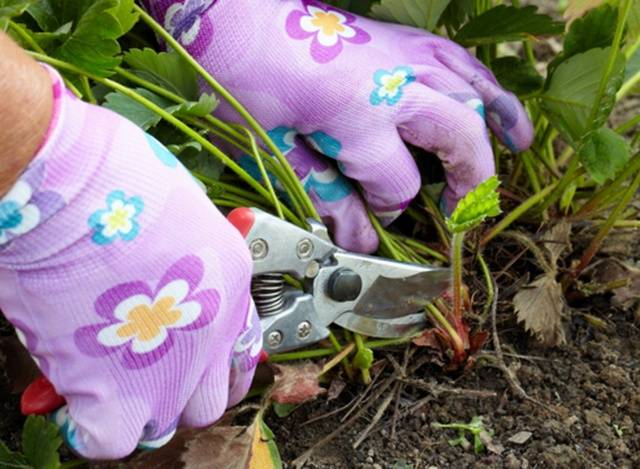

In the fall, you can remove all the leaves of the strawberry to channel its forces into the formation of the root system. This procedure has its drawbacks, since the buds from which the berries appear are eliminated. The plant will take longer to grow green mass.
Reproduction
Garden strawberries of Japanese origin are propagated by a mustache and a bush. Growing from seeds is used only in breeding work to develop new varieties of plants. In practical gardening, this method is not so relevant, since a seedling grown from seeds does not retain even half of the varietal properties of the original plant.
Reproduction with a mustache
Whisker propagation is the easiest and most effective way to get new plants. It is used for summer-autumn planting of strawberries after the end of fruiting.
- Plants no older than two years of age are used as mother bushes.
- The flowers are removed from the plants intended for use as mother plants so that all the growth force is spent on obtaining the whiskers.
- In order for the rosettes to take root well, the soil around the bushes is loosened, weeded and moistened.
- The mustache is straightened over the surface, the rosettes are sprinkled with earth and slightly pressed down.
- The rosettes from the mustache leave the first and second, located closer to the mother bush, the rest are removed.
- Rooted sockets are dug out together with a lump of earth and planted in a prepared place.


1-2 sockets are left on the mustache
When propagating with the help of a mustache, there is a complete guarantee of the survival of the seedling, since the rosette is completely rooted from the mother bush. With this method, all varietal characteristics of the original plant are preserved.
Dividing the bush
By dividing the bush, mustache or low mustache varieties of strawberries are propagated. And also this method is good when breeding acutely deficient varieties in parallel with the reproduction of a mustache. For division:
- Choose the bush with the highest number of growth points.
- With a sharp knife, divide it into several parts, making sure that on each division there are 1-2 points of growth and 2-3 roots.
- The leaves are removed, leaving small ones at the growth points.
- Delenki are planted under a film to maintain high humidity.
- After 3 weeks, the rooted seedlings are planted in a permanent place.
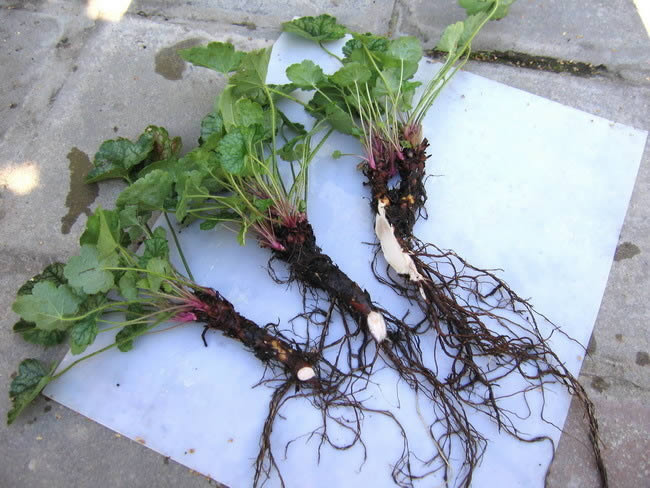

The bush is divided into several parts
As with mustache propagation, this method completely retains all the properties of the original variety. Its advantage is that it can be used during the entire growing season - from spring to August.
Landing
When planting seedlings, you need to act as follows:
- Choose a bright area, preferably elevated, swampy and saline soils will not work.
- Thoroughly loosen the soil, add humus or other organic fertilizer to it.
- Plant bushes based on 4 plants per 1 sq. m, making holes 12-15 cm deep.
- If the seedlings do not seem to be of very high quality, it is necessary to treat the roots with Radifarm's solution so that the bushes are guaranteed to take root.
Diseases and pests
Like all garden strawberries, the Chamora Turusi variety is susceptible to diseases and attacks of all kinds of pests. This happens especially often when the agricultural technology of plants is violated: an overdose of fertilizers, thickening of plantings, waterlogging or drought. Let's consider the most typical for this variety.
Table: diseases and pests characteristic of the Chamora Turusi variety
| Disease or pest | External manifestations | Prevention | Control measures |
| Verticillary wilting |
|
| Spraying with Benorad, Fundazol (according to the instructions) at the first signs of the disease. During the season - no more than 3 treatments. |
| Fusarium |
|
|
|
| Gray rot | dark gray spots on berries, covered with a long lighter "pile" with tiny black dots |
|
|
| Strawberry mite |
|
|
|
| Strawberry-raspberry weevil | small holes in the form of a lattice on the leaves and fruits | Spraying the beds in early spring with a solution of iodine (5 ml per 10 l of water) or potassium permanganate (3-5 g per 10 l). |
|
Diseases and pests of Chamora Turusi strawberries in the photo
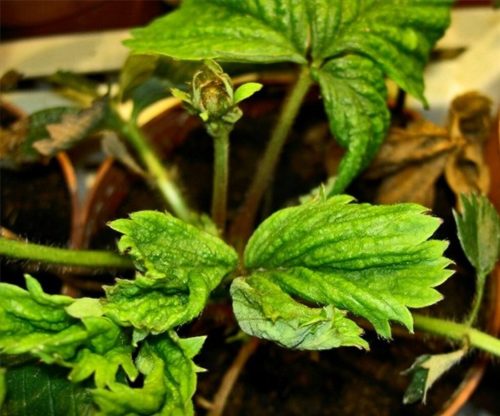

Leaves damaged by a mite are deformed
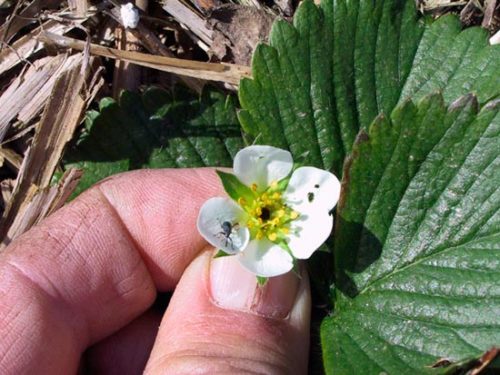

A flower struck by a weevil does not set a fruit
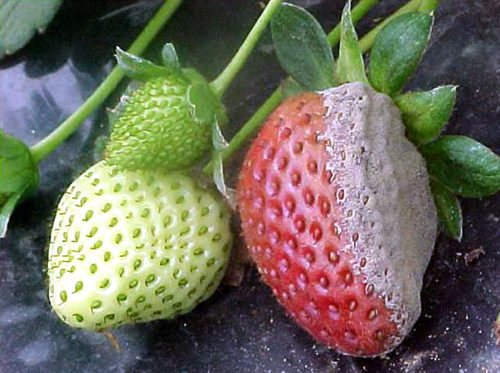

Gray rot damages berries
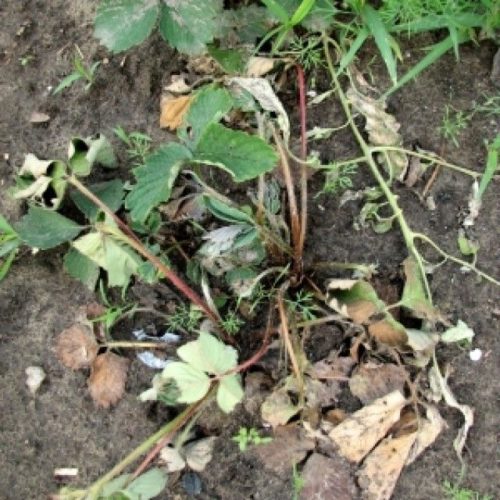

Verticillium wilt is one of the most common diseases of garden strawberries.
Specificity of care
The strawberries of Chamora Turus are unpretentious in care, but watering and feeding for the garden berries are necessary.
Watering
Increased soil moisture causes the spread of fungal infections. And with a lack of moisture, the berries become smaller, and voids form in the pulp. Therefore, correct and timely watering for strawberries of this variety is an important measure.
Berry bushes are watered once every 6-8 days, with extreme heat and drought, irrigation activities are carried out more often. Removing weeds and loosening the soil is easier to carry out after watering.
Advice! Before flowering, irrigate not only the soil under the bush, but also the leaf cover. As soon as the plant enters the flowering phase, watering is carried out under the rhizomes.


Top dressing
To obtain high-quality fruiting, strawberries require additional fertilizers and feeding. For the first time, berry bushes are fertilized with organic matter before the beginning of the flowering period. During the formation of ovaries, the fruit crop is fed with a mineral complex.
In the fall, before winter rest, cow dung and humus are introduced into the soil.
Nitrogen fertilizing is used with caution. This type of fertilizer causes an active growth of the green mass of the plant, which negatively affects the quality of the crop.
See also
7 best ways to properly freeze strawberries at home
To read
Pruning
Before the winter rest, excess, damaged and dry leaf plates are cut off from strawberry bushes.Also, multiple tendril shoots are cut off. The beds are thoroughly loosened, and the soil is mulched with sawdust or dry foliage. Sanitary pruning of unnecessary leaves and shoots is carried out in early spring.


Prevention
To protect plants from the development of fungal and viral lesions, as well as to protect against pests, preventive spraying of berry bushes and soil is carried out in spring and autumn.
Diseases
If the rules of agricultural technology are violated, garden strawberries are exposed to fungal infections. In order to avoid serious diseases, in early spring, the bushes are sprayed with preparations based on fungicides containing copper.
Pests
For the prevention and control of pests, in the spring, the garden culture is treated with professional means containing insecticides.
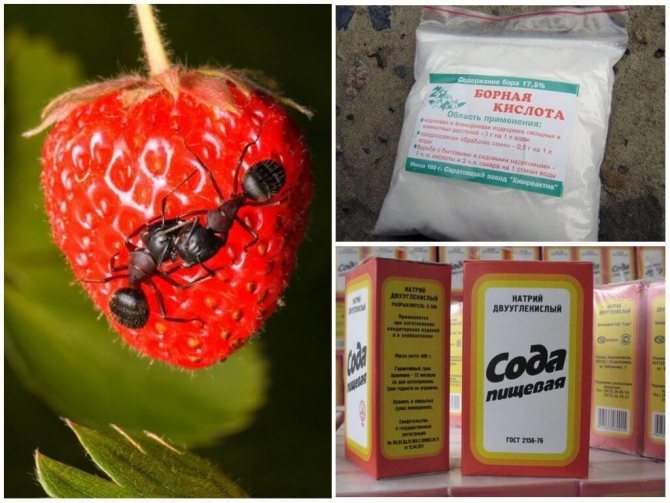

Also, for preventive purposes, solutions with garlic and iodine are used.
Harvesting and storage
Berries are harvested in the morning or evening, in clear weather. For better fresh storage, they begin to remove the fruits two days before the onset of real ripeness, they are torn off with small tails.
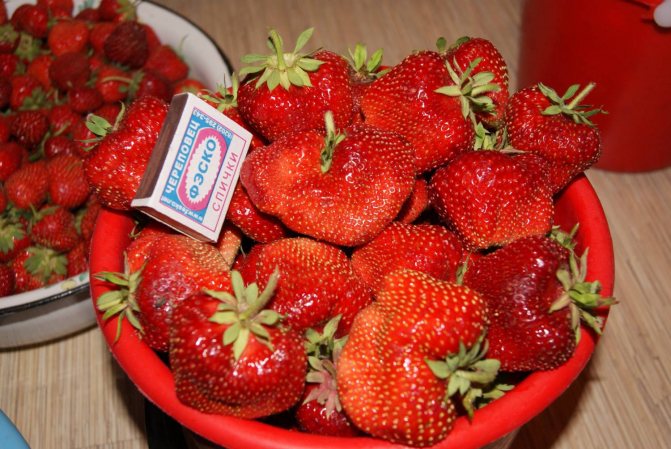

It is recommended to remove berries together with sepals and petioles.
It is best to store berries in glass jars or food containers in a cool place. The crumpled and sick are discarded. Strawberry fruits are not subject to long-term storage, therefore, experienced summer residents are advised to use them for processing, make jam, compotes, jams or freeze.

